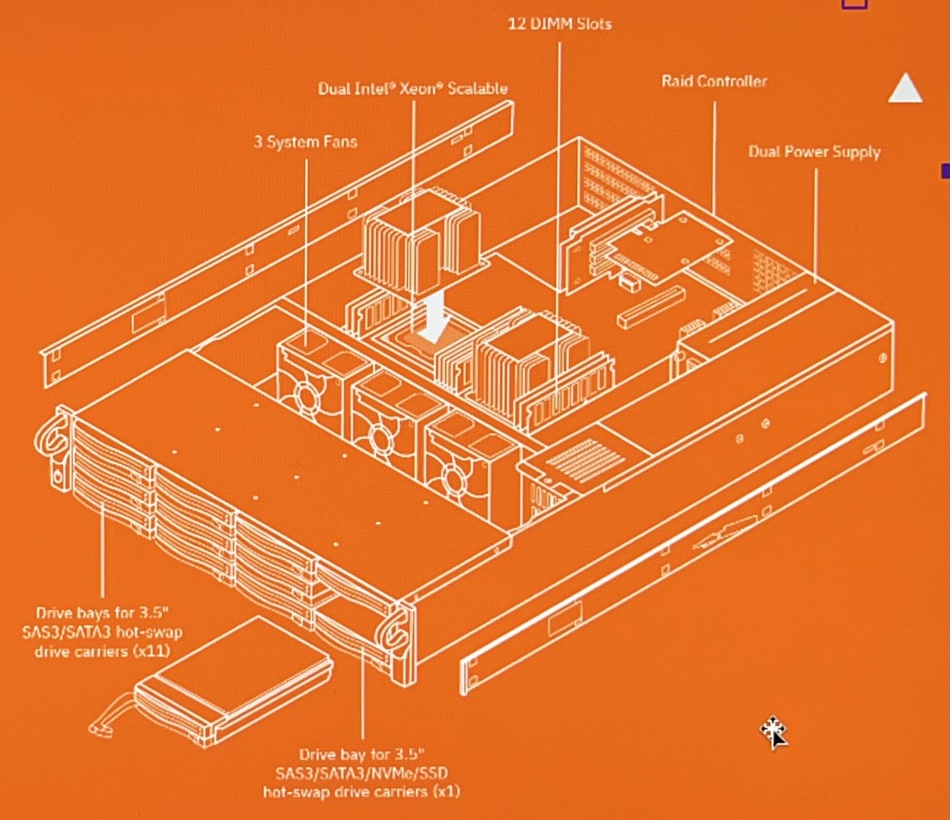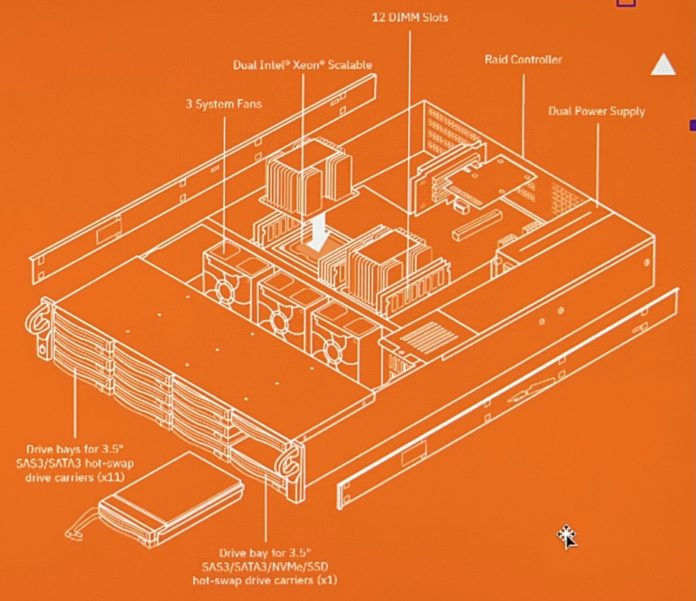The two Veeam founders, Ratmir Timashev and Andrei Baronov, announced their Object First company and backup storage product in June. It’s now in beta test and we just found out a load of details, including its flash cache acceleration.
Anthony Cusimano, director of marketing for Object First, told us the system delivers more than 1GBps of throughput and uses S3-compatible object storage, with object lock for immutability, and the public cloud for longer-term retention.
We found out it is a 2RU enclosure with two models. A 96TB capacity one with 10 x 12TB x 7,200rpm SAS hard disk drives; eight for data and two for parity in a RAID-6 scheme. This can support the loss of two drives. There is a hot spare drive in the chassis.
The larger capacity 128TB variant has 10 x 16TB x 7,200rpm SAS disk drives and the same RAID-6 scheme with two spindles set aside for parity plus an extra hot spare drive.
In both products the drives are front-ended by a 1.6TB NVMe SSD. All writes come in via 2 x 10GbitE ports, land on the SSD, and the data is then sent to the hard drives. It can be recovered quickly from there but obviously less quickly from a public cloud retention tier. Supported back-end clouds are AWS, Azure, Backblaze, and Wasabi.

As per the diagram above, the data drives are installed flat across the front of the chassis in three rows and four columns. There are also 2 x 240GB SATA SSDs for the Linux OS that powers the system via a pair of Xeon CPUs. These SSDs are in a RAID-1 configuration. The object storage software was written by Object First; it is not MinIO software.
There can be four Object First nodes in a cluster, with each node adding 1GB/sec or so performance. Four is an arbitrary cluster limit, put in place while the product is in beta test. Cusimano expects that the limit will be raised, possibly substantially in the future.
We note there is also drive capacity headroom with 16TB, 18TB, and 20TB drives already available from the suppliers. 20TB suggests maximum node capacity of 200TB raw and, at 20 percent overhead, 160TB usable capacity.
Pricing hasn’t been worked out but we are told the system will be affordable. It’s also simple to use with four basic commands; set up S3 bucket, write to it, read from it, and set up an S3 key.
This Object First box looks to be simple to use, simple to deploy, speedy to operate, and hopefully affordable to buy. Deduplication and compression are obvious development additions, upping the effective capacity two, three or more times, and that might need more NVMe SSD capacity and CPU horsepower. Any data reduction would lower the price per terabyte.
The Object First system is tailored to be a Veeam backup target in this iteration. Another software development product could be to extend the range of supported backup software. We’ll watch how all this develops with great interest.








